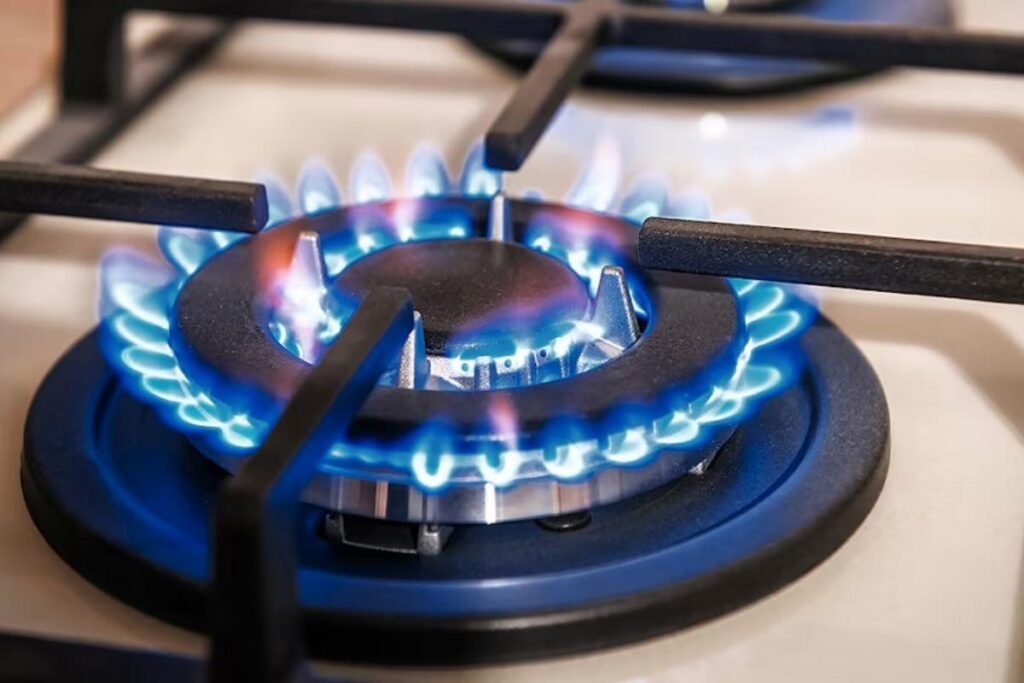Dinner plans are on hold, and a simple turn of the stove knob results in frustrating silence or the hollow clicking of a burner that refuses to light. Don’t panic. In most cases, this is a simple DIY fix that requires more patience than expertise. A gas burner fails to ignite for one of two fundamental reasons: it’s not getting fuel, or it’s not getting a spark.
This guide will walk you through a complete diagnostic process, from the simplest checks to more advanced troubleshooting, helping you identify and resolve the issue safely. Before you grab any tools, ask yourself this one critical question:
Is it just one burner acting up, or are all of them refusing to light?
The answer is your key to a fast and effective repair.
SAFETY FIRST: Your Ultimate Priority
Before touching any part of your gas stove, ensure your safety.
Unplug the Stove: Disconnect the appliance from the electrical outlet to prevent any risk of shock. The ignition system is electric.
Turn Off the Gas (Optional but Recommended): For any task beyond a simple cleaning, locate the gas supply valve behind your stove and turn it perpendicular to the pipe to shut off the gas flow.
Never Disassemble a Gas Line: Do not attempt to disconnect or service the gas lines themselves. This is a job strictly for professionals.
Scenario 1: Only ONE Gas Burner Won’t Light
If a single burner is the culprit, the problem is localized to that specific burner’s components. This is the most common scenario and is almost always caused by a clog or cleaning issue.
Step 1: Visual Inspection & Basic Cleaning
First, let’s examine the components. Remove the heavy metal grate and the burner cap (the flat, circular disc that sits on top).
Check Alignment: Is the burner cap seated perfectly flat on the burner head below it? A wobbly or misaligned cap can obstruct the flow of gas from the burner head’s ports and prevent proper ignition.
Inspect for Debris: Look closely at the burner head. You will see small holes or slits along its perimeter—these are the ports where gas is released. Are they clogged with food, grease, or cleaning residue?
Examine the Igniter: Locate the porcelain igniter, a small white ceramic nub protruding from the stovetop near the burner head. Is it coated in grime, wet, or cracked?
Step 2: The “Click Test” – The Most Important Diagnostic Step
With the grate and cap still off, darken the room slightly and turn that burner’s knob to the “Light” position. Listen and watch closely.
YES, I hear a clicking sound and/or see a weak, off-color spark.
This is great news. The electrical ignition system is trying to work. The problem lies with either the fuel delivery at the burner or the spark’s ability to complete its journey.
A boil-over is the #1 cause of a clogged burner, blocking the path gas needs to travel.
Clean the Burner Head: Using a stiff brush (a toothbrush works well) or a straightened paper clip, carefully clear out each port on the burner head. For stubborn grime, a toothpick can also work. A burst of compressed air can help blow out any loose debris you’ve dislodged.
Clear the Gas Orifice: The most critical clog often happens deeper. The burner head lifts straight off. Underneath, you will see a small, brass nozzle called the gas orifice. This is where the gas exits before mixing with air. Using your straightened paper clip, gently push it down into the tiny hole in the center of the orifice and rotate it 3-4 times to break up any internal blockage. Do not force it or use a tool that could break off inside.
Think of it like this: The spark needs a clean, metal-to-metal connection to complete its journey from the igniter tip to the burner head. Grease and food grime create a weak electrical ground, resulting in a faint spark that isn’t hot enough to ignite the gas.
Clean the Porcelain Igniter: Dip a cotton swab in rubbing alcohol and thoroughly clean the metal tip and the entire white ceramic insulator.
Clean the Burner Head Contact Point: Use a wire brush or more rubbing alcohol to scrub the area of the burner head directly opposite the igniter tip. This clean surface is essential for a strong spark to form.
Once clean, reassemble the burner head and cap, ensuring they are perfectly seated, and test again.
NO, there is no clicking sound at all.
This points to a localized electrical failure for that specific burner.
If you recently cleaned the stovetop, the most likely culprit is moisture shorting out the electrical connection.
Action: Gently dry the entire burner area and the igniter with a soft cloth. For stubborn moisture, you can use a hair dryer on its lowest heat setting, held several inches away, for about a minute.
The igniter is connected to the central ignition system via an igniter wire.
Action: Look beneath the burner head where the porcelain igniter disappears into the stovetop. You may see the connected wire. Gently check if it is securely fastened to the base of the igniter. Sometimes a pot boiling over can jostle it loose. If the wire appears frayed or broken, it will need to be replaced.
Each burner knob is connected to a spark switch. When you turn the knob, it tells the ignition system to send a spark to that specific burner.
Diagnosis: If you’ve confirmed the igniter is clean, dry, and wired correctly, the switch itself may have failed. Replacing a spark switch is an advanced repair and often requires opening the stove’s control panel. At this point, it may be time to call a professional.
Scenario 2: ALL Gas Burners Won’t Light
When no burners will light, the issue is systemic. The problem is affecting either the main gas supply to the appliance or the central electrical ignition system.
Step 1: Checking System-Wide Power and Gas
Start with the most straightforward checks before assuming a component has failed.
Power Check: Is the stove’s power cord firmly plugged into the wall? Check your home’s circuit breaker to see if it has been tripped. Often, a nearby GFCI outlet (the kind with “Test” and “Reset” buttons) can be on the same circuit and may have tripped, cutting power to the stove’s ignition.
Gas Check: Locate the main gas valve for the appliance, typically on the wall behind the stove. The handle should be parallel to the gas line (in the ON position). If it is perpendicular, it is in the OFF position.
Step 2: The System-Wide “Click Test”
Try to light any of the burners. What happens?
This is a clear indicator that the ignition system is receiving power, but there is a universal gas flow problem. Double-check that the main gas valve behind the stove is fully open. If it is, and you still get no ignition, there may be an issue with your home’s gas supply, and you should contact your utility provider.
This confirms a system-wide electrical failure in the ignition circuit.
Diagnosis: The most probable cause is a failed spark module. The spark module is the central brain of your stove’s ignition system. It’s a small box inside the stove that takes the signal from the knob’s spark switch and generates the high-voltage pulse sent to the igniters.
Solution: While a confident DIYer can often replace a spark module by accessing the back or top of the stove, it is considered an intermediate to advanced repair. If you are not comfortable working with appliance wiring and a wire harness, this is a clear sign to call a service technician.
When to Put Down the Tools: Calling a Professional
You’ve done great troubleshooting, but some issues require professional expertise. Call for service if:
You Smell Gas: If you smell gas at any point and have confirmed all burners are off, do not proceed. Turn off the main gas valve, open windows, and call a professional immediately.
The Problem Persists: If you have thoroughly cleaned all components and checked all connections and the burner(s) still won’t light.
You Suspect a Faulty Part: If your diagnosis points to a failed spark module or spark switch and you are not comfortable performing the replacement.
The Flame is Yellow or Orange: A healthy flame should be a crisp blue. A weak, yellow, or orange flame indicates incomplete combustion and an incorrect gas-to-air ratio. This requires professional adjustment.
An Ounce of Prevention: Keeping Your Burners Firing
Prevent future ignition problems with these simple maintenance habits:
Clean Spills Immediately: Don’t let boilovers sit. Once the burner is cool, wipe away spills to prevent them from baking on and clogging ports.
Check Your Caps: After cleaning, always ensure burner caps and heads are seated perfectly flat and stable.
Perform Regular Brush-Downs: Once a month, remove the grates and caps and use a stiff brush to quickly clear away any crumbs or debris from the burner heads.


